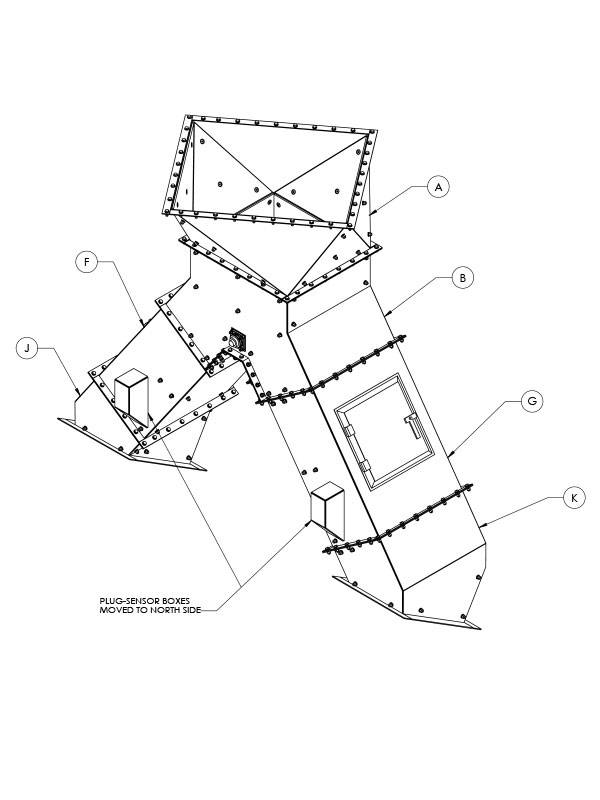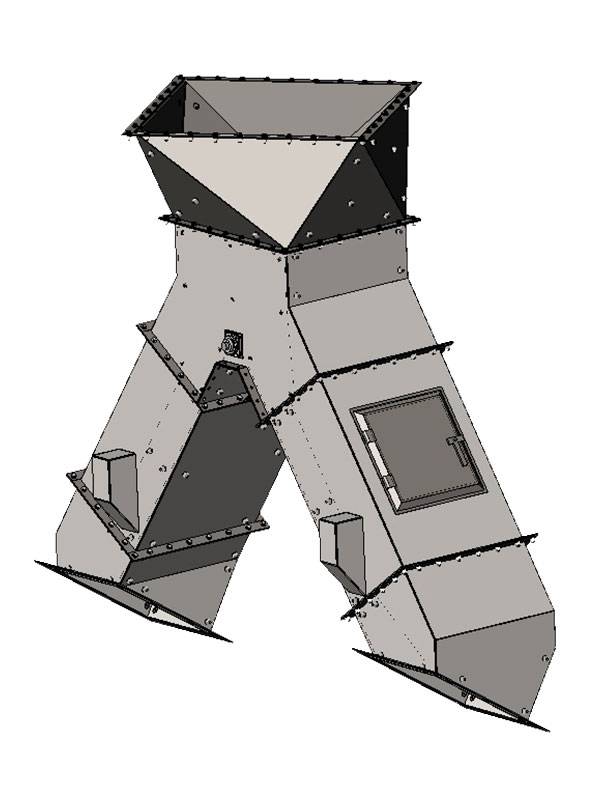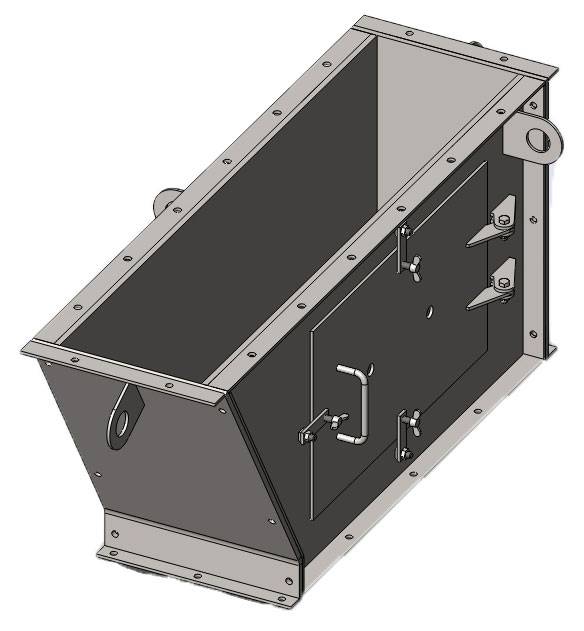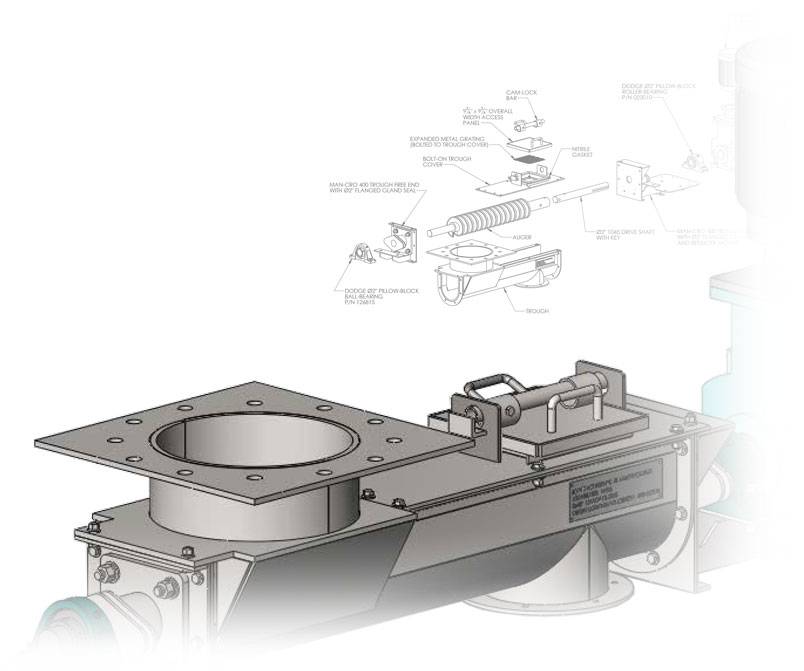
BULK MATERIAL HANDLING DESIGN
Material Handing Optimization
The handling of bulk materials is a critical part of your operations. Done improperly, there are countless hidden costs that can drive up operating expenses. Optimizing the material handling process through effective design is our specialty. At St. Lawrence, we utilize our 60 years of industry knowledge to provide the best solutions for your material handling systems.
What are your "real" costs?
St. Lawrence designs address the hidden costs of spillage, high wear, wasted manpower, lengthy downtime, burn permits and confined space requirements. Our designs lower costs through allowing quick and easy maintenance and increased productivity through maximizing equipment uptime.
The combination of the best tried and true design concepts with the highest quality abrasion resistant materials result in the lowest overall cost of ownership for our customers.

Examples
- Point to point transfers
- Diversion transfers
- Feeder loading and discharge
- Crusher feed and discharge
- Stacking and reclaim operations
- Material storage
- Tripper and cascade chutes
- Rail and river unloading
Material Handling Challenges
- Maintenance costs
- Performance and capacity issues
- High abrasive wear
- Impact issues
- Material adhesion (sticking/clogging)
- Spillage
- Dust development
- Maintenance access
- Confined space requirements
- Burn permit requirements


Functional Simplicity
In today’s environment of “space age chute designs” that promise the world while delivering very little, St. Lawrence chooses to refine and perfect tried and true designs. Sometimes, “new and improved” ends up only as “new and expensive”.
The Modern-Day Approach to Chute Design
Current design practice is to use over engineered, fancy looking designs that attempt to model the flow of your bulk materials. This methodology has one critical flaw: the design must be based on one single set of parameters for the material being modeled. Variations of your materials, ie. particle size, moisture content, density, velocity, shear stress or bulk modulus, can dramatically change the flow characteristics. Chutes that are designed for one single set of parameters will not function properly if or when any of those parameters change. In addition, many transfer points must be designed to handle materials with a variety of characteristics, especially if you are blending materials or are obtaining your materials from multiple sources.
The St. Lawrence Approach
At St. Lawrence, we consult with our customers and apply our engineering experience to identify needs, pinpoint objectives and provide the most appropriate solutions. We embrace a design philosophy that takes the best features of chute designs both past and present to provide our customers the optimum balance of features that meet their specific needs. Bulk materials have not changed over the years. What has changed, however, is the safety and environmental regulations and requirements with their associated labor costs. We provide solutions that work as well in the field as they do on a computer.
Our designs incorporate the following philosophies:
- Traditional square chute designs that offer quick, simple and easy maintenance.
- Flanged construction that allows maintenance and liner changes without the need for confined space procedures.
- Chute maintenance and liner replacements designed for fast removal without the need for burn permits.
- Chute liners designed to optimize weight and ensure personnel safety.
- Diverters designed for quick gate maintenance and removal.
- Reduction of material sticking through material choice and unique shape designs.
- Use of highest grades of abrasion and impact resistant materials.
We can help with the handling of any bulk materials including:
- Alumina
- Ash
- Bauxite
- Carbon
- Clinker
- Coal
- Coke
- Cullet
- Gypsum
- Iron Ore
- Limestone
- Sand
- Scale
- Silica
- Solid Waste
- Stone
- Wood Chip
Common Design Options
- Flanged chute construction
- Removable chute panels
- Convenient access points
- Replaceable maintenance friendly diverter gates
- Controlled flow for dust reduction and improved performance
- Improved flow designs for reduced sticking and plugging
- Material spreaders to disperse wear
- Safety weight liners for safety and ergonomics
- Designs that eliminate confined space requirements

Design Control
Ensuring Excellence
Our stringent design control process involves all stakeholders and is a valuable tool for optimized designs that are based on the unique needs of each customer and situation. Managed by our experienced engineering department, every project must adhere to our thorough design control processes.
Project plan development:
- Define resources including all organizational and technical interfaces.
- Determine design inputs
- Customer input
- On-site evaluation
- Functional and performance requirements
- Historical information with previous design and performance considerations
- Other relevant requirements or considerations
- Determine design outputs that must:
- Be suitable for verification against the design
- Meet the input requirements
- Provide appropriate information for purchase and production
- Contain or reference product acceptance criteria
- Establish the necessary review, verification and validation criteria.
Review of design plan:
- Verify design inputs for accuracy.
- Evaluate the ability of the results to meet requirements.
- Identify problems and propose any necessary actions.
Approval of design plan:
- Design inputs, design outputs, verification and validation to be approved by the identified responsible stakeholders.
Validation:
- To be performed in accordance with the approved design plan
- Assure that resulting product is capable of meeting the specified

